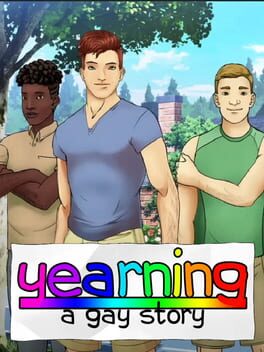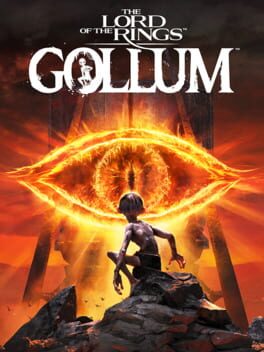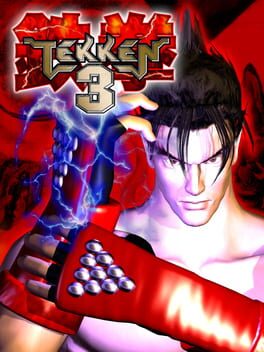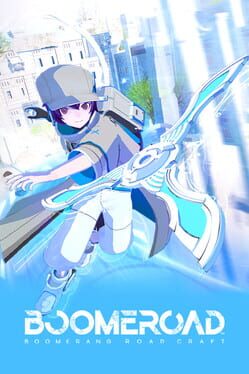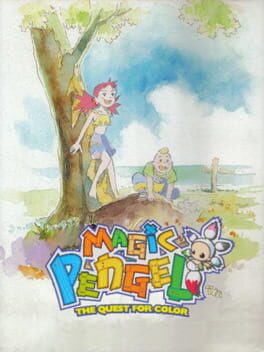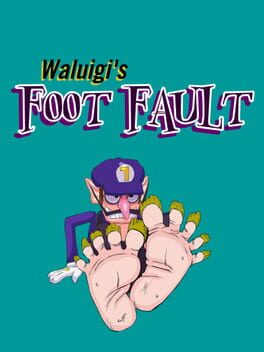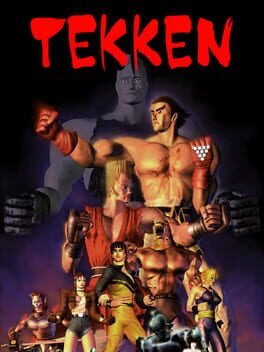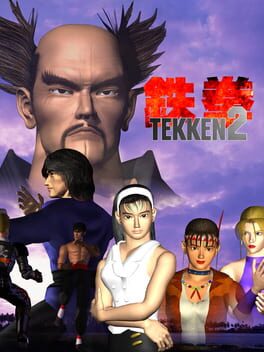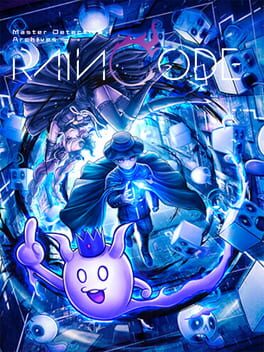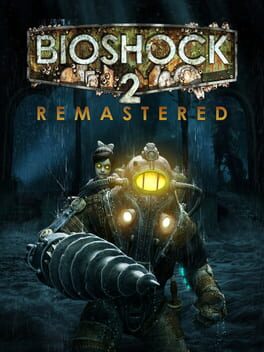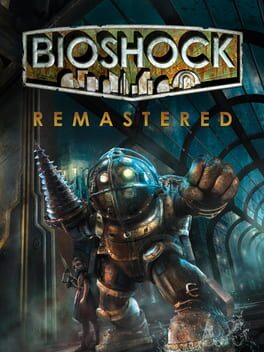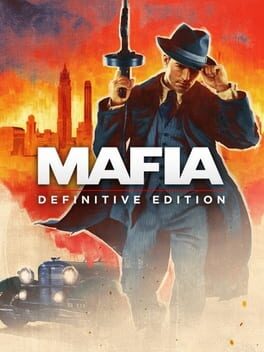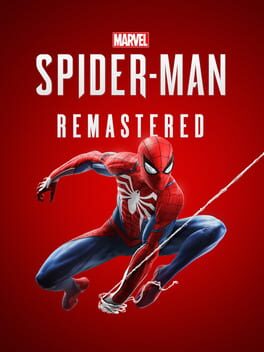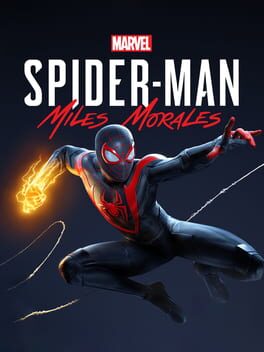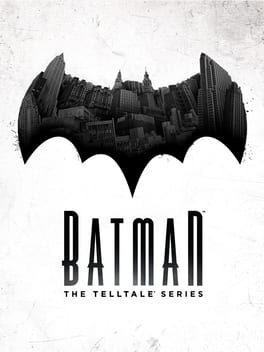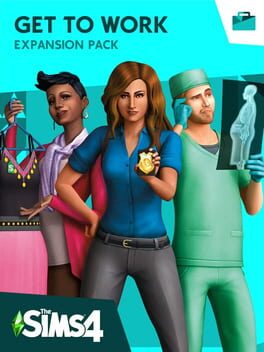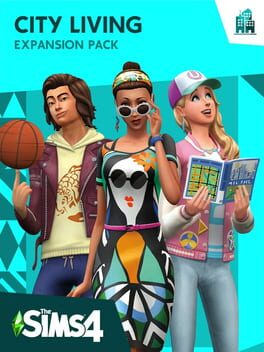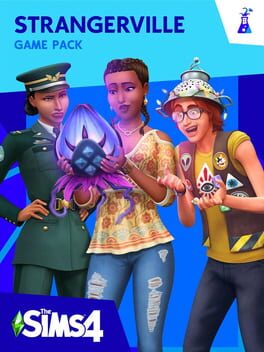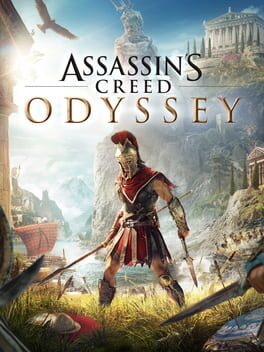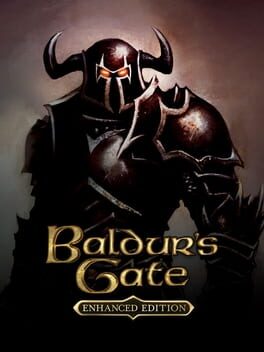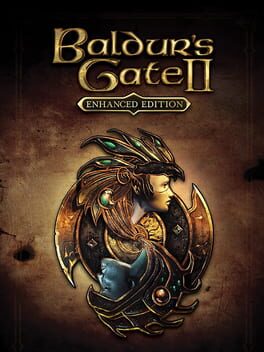1027 reviews liked by HuFe
Metroid
1986
"Bro this game is so outdated!!! Just play Zero Mission instead and skip this!!!!!!!!!!"
why don't I skip over your bad takes how about that
shoutout to HPRshredder and his guide for getting me interested in playing Metroid 1 again as well as The Geek Critique for revisiting the game and shedding a more positive light to it. I haven't seen U Can Beat Video Games's video yet but his Castlevania II and Dragon Warrior ones were really great so this one's probably worth checking too, okay I'll actually talk about the game now
there's something about the original Metroid that has this cool...."uniqueness"? yeah I'm not sure what's the right word for it, but there's a unique feeling about this one that none of the later games quite have. now I agree that every other Metroid game I played is better than this one (every 2D one besides Metroid II GB, a decent portion of Prime 1), but I'd say that this is comparing a collection of gold trophies to a singular dusty gold trophy that could use a quick feather duster to shine again. what I'm saying is that this game's good
what's cool about the original Metroid's story is that there's nothing to precede it. none of the familiar lore of the later games is here so what we're given is in this one (which isn't much) (that's cool though) is all we really get. basically a powerful species known as "Metroids" has been captured by the Space Pirates, they're like criminals but in the space alien variety. The Federation Police sends out some bounty hunters to Planet Zebes, which is the Space Pirates hideout, to stop them from using the Metroids as a dangerous weapon however none of them were able to succeed. as a last resort they send Samus Aran, a cool cyborg dude (please don't get on my case I'll bring it up later) who gained a famous reputation for completely bounties most others thought would be impossible. naturally it would make sense for them to send the best of the best, so now Samus Aran must now traverse through Planet Zebes, explore and find the items and abilities left by it's previous civilization, defeat the two leaders of the Pirates (Ridley and Kraid), and eradicate the Metroids before they destroy the galaxy! for the first game, there's still a pretty decent amount of backstory and is still much more than a majority of games that came before it, so it's cool that there's a reason why you're there as well as an actual world you're in that isn't just a bunch of nameless disconnected levels, that's pretty nice for a game made in 1986.
Metroid is an exploration game, everyone probably knows it. what everyone always knows as well is that you're aren't just going right the entire game (cue a lengthy explanation on how a first-time player goes right until a dead end, only to go all the way back to the left and find the Morph Ball so they can go through the tiny corridor they couldn't before). your ultimate goal of the game is to defeat both Ridley and Kraid so you can access the final part of the game you encounter the Metroids as well as the final boss, however the way you go about doing so is all up to you, to the point where you can choose whether to face Ridley first or Kraid first. now you could immediately head straight for their hideouts and take them out as soon as possible, but an inexperienced player will no doubt get their ass handed to them, which makes sense since Zebes is a pretty hostile planet, so they'll probably want to stay around in Brinstar (the beginning section of Zebes) for a while and gather items to power up and prepare them for the tougher parts of the game. some of the items you can get are Missiles, which not only are a powerful offense, but can also help you open the Ketchup and Mustard Doors that can't be opened by regular shots. Energy Tanks not only increase your health by 100 but it also fully restores your health too, there's 8 of them in the game but Samus's health is maxed out after 6 of them, so it'd be a good idea to save the remaining 2 for when you need to regain some health quickly. now for actual upgrades, the Morph Ball (or Maru Mari as the cool people call it) lets Samus morph into a tiny ball to get through small passages, and the Bomb allows Samus to make bombs in this form to help defeat small enemies and get through blocks that otherwise can't be destroyed. the Long Beam makes Samus's shots long ranged which can be good for dealing enemies from far away, but it's not too important of an upgrade so you can to skip it if you want. the Ice Beam lets you freeze almost all the enemies in the game which also can turn them into temporary platforms before they thaw out which can helpful if you don't want to deal with them or if you want to do a few helpful skips, it can still be used as a regular weapon. the Wave Beam is a beam that pierces through everything and is decently powerful, however it overrides the Ice Beam which is needed if you want to defeat or get away from the Metroids in the final area so it's actually even more skippable than the Long Beam, if you plan to use this then make sure you pick up the Ice Beam again before you head to the final area. the High Jump Boots let Samus just higher, not much to say other then it helps Samus obtain the Varia Suit easier. the Varia Suit not only changes Samus's armor to a bright pink as a symbol of power, but it also halves all damage taken, making it very useful when it comes to traversing beyond Brinstar. lastly the Screw Attack, probably the best upgrade here, lets you perform a powerful shock whenever you diagonally jump, which instantly kills most regular enemies in the game, not only that but it's possible to get the item before you even face Ridley or Kraid, I cannot justify its power with what I'm saying here so you really need to get it yourself so you can understand what I mean.
once you're powered up and have defeated the two Space Pirate leaders, you can head to the upper left corner of Brinstar and gain access to the final area, Tourian, where the Metroids and final obstacle of the game is awaiting you, "Mother Brain". you better conserve your missiles for the end, and I don't mean just for Mother Brain, but to even get to her you'll have to destroy regenerating barriers that can only be damaged by barriers, they don't regenerate if you can manage to destroy them thankfully. the Mother Brain fight is weird, she doesn't attack you at all but the Rinkas (floating projectives that aim for you) and the cannons in the battlefield are very plentiful, so you'll be spending your time getting hit by those a lot thanks to your big hitbox, and whatever you do, DON'T fall in the lava in front of Metroid Brain, try to keep your distance by being on the right edge of the final pillar so you don't fall in the lava and instead land on the safe platform to the right of the pillar. after defeating Mother Brain you've now completed the ga-- SIKES YOU HAVE TO DO A SURPRISE ESCAPE SEQUENCE but it's kinda easy outside of the platforms being a bit small, the layout is also repeated a lot so it really shouldn't be a big deal once you memorized it. when you do that only then do you get the ending and here's when the fun part comes in. depending on how fast you beat the game, you might be able to discover Samus's true identity! if you manage to finish the game under five hours, Samus takes off the helmet to reveal....HE WAS A SHE THE WHOLE TIME?!?!?!?!?! yeah everyone and their mother knows Samus is a female nowadays (unless you don't so if this is how you find out then I'm terribly sorry), Nintendo themselves only kept it a secret for this game in particular, but for 1986 this was a pretty cool hidden twist, especially considering that Samus is one of the first female protagonists. yeah Ms. Pac-Man predates her by about four years, sorry Samus! if you finish the game in under three hours Samus goes down to a leotard which also lets you play as in that form after the credits (or by a password if you don't want to do all that), and under a hour has her go into a bikini. she must be the most cocky and confident bounty hunter ever if she's taking down an entire planet wearing nothing but that under her suit. if you didn't beat the game under five hours, you can always try again and see how faster you can become with more experience and knowledge of Planet Zebes. it's a pretty short game so that along with the incentive of getting to see Samus in a 8-bit bikini makes the replayability of the original Metroid pretty high.
Metroid's graphics are very simplistic, but I think this actually benefits toward the game's favor. normally having a black background for the entire game would be kinda lame, but for here it works. you're venturing inside a dark and hostile planet, if the background was blue or something then the entire atmosphere would be thrown out of the window. speaking of atmosphere, I think this is the first game in my opinion to successfully pull off a tense one. the realistic looking enemies compared to other games at the time having stuff like Goombas or Moblins makes you feel like your dealing with a much more genuine threat, though a lot of them are actually easy to face against especially once you have enough upgrades. all the dark scenery likes the faces you see next to the elevator that takes you to Ridley as well as the iconic face in the corridor just before Kraid's room makes you feel like you really don't belong here, thankfully you're playing as Samus though and no one is more capable for this job than her.
if you need something to boost the atmosphere, then the soundtrack's got you covered. the Title Theme starts off simplistic and foreboding but if you stick around long enough then it transforms to a much more hopeful melody but looping back to the menacing drones again. the Start Jingle and Brinstar continue this optimism with an upbeat and heroic tune before you end up wandering into a Secret Area that brings back the droning from the beginning of the title screen but with a more neutral and mysterious tone this time. if you're lucky and happen to come across the statues that grant you upgrades you get this Item Jingle to signal that not only did you gain a new ability but that you're on the right path to victory. though if you hear this near an elevator and choose to go down, you'll instead hear this foreboding tune of Norfair which while also signifies you're on the right part (to Ridley in particular), it also means the game's no longer messing around and you face a huge threat of getting killed if you haven't prepped up enough before. go down even further to Ridley's Hideout and get to even to hear this game's "you will die" theme. if you choose to go to Kraid's Hideout, you instead get this really rad and groovy ass theme that I can't believe was composed back in 1986. it's insane how bopping Kraid's theme is, it almost feels out of place in a way but I'm not complaining, this is the best track in the game and I will not be argued otherwise. once you face Ridley and Kraid or just venture into Tourian, you get this pretty threatening theme once you ignore the goofy bubble sounds that play during the whole thing. by the time you get to Mother Brain there are no more melodies, there are only deranged 8-bit noises to describe the terror that is Mother Brain, and by Mother Brain, I mean everything else that's inside her room. the Escape Theme starts off with a "you need to get out" vibe but after the first 30 or so seconds it insteads transforms into a "you saved the galaxy, just one more push!" vibe. then there's the Ending Theme which is a full on melody that goes from menacing to triumphant then just starts going all out after that first minute, okay this might rival Kraid's theme for the best track in the game.
so yeah Metroid NES is epic especially for its time and I feel the smaller majority that still thinks this game holds up, though it is rough in a couple of places I'll admit. lack of a map, similar looking rooms, enemies being able to hit you while you're going through doors, starting with 30 energy after a game over, the entirety of Mother Brain's room, it's a little rough to get into, especially on your first or second playthrough when you have no idea what to do. if you have the courage to come back to this game though and learn everything about it, it becomes much more enjoyable and dare I say....fun. even with Zero Mission being arguably a better Metroid 1 experience, I still can't bring myself to say this game can be easily skipped. Zero Mission may take place in Zebes, but otherwise it's a full-on remake with completely different room layouts as well as reworked bosses and gameplay elements, a very great remake I have to add, but I do have the courage to tell you that you will indeed be missing out if you don't give the original a deserved shot. despite all my praises, this is somehow still the weakest Metroid I've played but a 7/10 being the weakest goes to show the exceptional quality of the Metroid franchise, heck I might change my score to a 8/10 later down the line because that's how neat I think Metroid is.
so yeah that's it, play the game, git gud or something do people still use that phrase
why don't I skip over your bad takes how about that
shoutout to HPRshredder and his guide for getting me interested in playing Metroid 1 again as well as The Geek Critique for revisiting the game and shedding a more positive light to it. I haven't seen U Can Beat Video Games's video yet but his Castlevania II and Dragon Warrior ones were really great so this one's probably worth checking too, okay I'll actually talk about the game now
there's something about the original Metroid that has this cool...."uniqueness"? yeah I'm not sure what's the right word for it, but there's a unique feeling about this one that none of the later games quite have. now I agree that every other Metroid game I played is better than this one (every 2D one besides Metroid II GB, a decent portion of Prime 1), but I'd say that this is comparing a collection of gold trophies to a singular dusty gold trophy that could use a quick feather duster to shine again. what I'm saying is that this game's good
what's cool about the original Metroid's story is that there's nothing to precede it. none of the familiar lore of the later games is here so what we're given is in this one (which isn't much) (that's cool though) is all we really get. basically a powerful species known as "Metroids" has been captured by the Space Pirates, they're like criminals but in the space alien variety. The Federation Police sends out some bounty hunters to Planet Zebes, which is the Space Pirates hideout, to stop them from using the Metroids as a dangerous weapon however none of them were able to succeed. as a last resort they send Samus Aran, a cool cyborg dude (please don't get on my case I'll bring it up later) who gained a famous reputation for completely bounties most others thought would be impossible. naturally it would make sense for them to send the best of the best, so now Samus Aran must now traverse through Planet Zebes, explore and find the items and abilities left by it's previous civilization, defeat the two leaders of the Pirates (Ridley and Kraid), and eradicate the Metroids before they destroy the galaxy! for the first game, there's still a pretty decent amount of backstory and is still much more than a majority of games that came before it, so it's cool that there's a reason why you're there as well as an actual world you're in that isn't just a bunch of nameless disconnected levels, that's pretty nice for a game made in 1986.
Metroid is an exploration game, everyone probably knows it. what everyone always knows as well is that you're aren't just going right the entire game (cue a lengthy explanation on how a first-time player goes right until a dead end, only to go all the way back to the left and find the Morph Ball so they can go through the tiny corridor they couldn't before). your ultimate goal of the game is to defeat both Ridley and Kraid so you can access the final part of the game you encounter the Metroids as well as the final boss, however the way you go about doing so is all up to you, to the point where you can choose whether to face Ridley first or Kraid first. now you could immediately head straight for their hideouts and take them out as soon as possible, but an inexperienced player will no doubt get their ass handed to them, which makes sense since Zebes is a pretty hostile planet, so they'll probably want to stay around in Brinstar (the beginning section of Zebes) for a while and gather items to power up and prepare them for the tougher parts of the game. some of the items you can get are Missiles, which not only are a powerful offense, but can also help you open the Ketchup and Mustard Doors that can't be opened by regular shots. Energy Tanks not only increase your health by 100 but it also fully restores your health too, there's 8 of them in the game but Samus's health is maxed out after 6 of them, so it'd be a good idea to save the remaining 2 for when you need to regain some health quickly. now for actual upgrades, the Morph Ball (or Maru Mari as the cool people call it) lets Samus morph into a tiny ball to get through small passages, and the Bomb allows Samus to make bombs in this form to help defeat small enemies and get through blocks that otherwise can't be destroyed. the Long Beam makes Samus's shots long ranged which can be good for dealing enemies from far away, but it's not too important of an upgrade so you can to skip it if you want. the Ice Beam lets you freeze almost all the enemies in the game which also can turn them into temporary platforms before they thaw out which can helpful if you don't want to deal with them or if you want to do a few helpful skips, it can still be used as a regular weapon. the Wave Beam is a beam that pierces through everything and is decently powerful, however it overrides the Ice Beam which is needed if you want to defeat or get away from the Metroids in the final area so it's actually even more skippable than the Long Beam, if you plan to use this then make sure you pick up the Ice Beam again before you head to the final area. the High Jump Boots let Samus just higher, not much to say other then it helps Samus obtain the Varia Suit easier. the Varia Suit not only changes Samus's armor to a bright pink as a symbol of power, but it also halves all damage taken, making it very useful when it comes to traversing beyond Brinstar. lastly the Screw Attack, probably the best upgrade here, lets you perform a powerful shock whenever you diagonally jump, which instantly kills most regular enemies in the game, not only that but it's possible to get the item before you even face Ridley or Kraid, I cannot justify its power with what I'm saying here so you really need to get it yourself so you can understand what I mean.
once you're powered up and have defeated the two Space Pirate leaders, you can head to the upper left corner of Brinstar and gain access to the final area, Tourian, where the Metroids and final obstacle of the game is awaiting you, "Mother Brain". you better conserve your missiles for the end, and I don't mean just for Mother Brain, but to even get to her you'll have to destroy regenerating barriers that can only be damaged by barriers, they don't regenerate if you can manage to destroy them thankfully. the Mother Brain fight is weird, she doesn't attack you at all but the Rinkas (floating projectives that aim for you) and the cannons in the battlefield are very plentiful, so you'll be spending your time getting hit by those a lot thanks to your big hitbox, and whatever you do, DON'T fall in the lava in front of Metroid Brain, try to keep your distance by being on the right edge of the final pillar so you don't fall in the lava and instead land on the safe platform to the right of the pillar. after defeating Mother Brain you've now completed the ga-- SIKES YOU HAVE TO DO A SURPRISE ESCAPE SEQUENCE but it's kinda easy outside of the platforms being a bit small, the layout is also repeated a lot so it really shouldn't be a big deal once you memorized it. when you do that only then do you get the ending and here's when the fun part comes in. depending on how fast you beat the game, you might be able to discover Samus's true identity! if you manage to finish the game under five hours, Samus takes off the helmet to reveal....HE WAS A SHE THE WHOLE TIME?!?!?!?!?! yeah everyone and their mother knows Samus is a female nowadays (unless you don't so if this is how you find out then I'm terribly sorry), Nintendo themselves only kept it a secret for this game in particular, but for 1986 this was a pretty cool hidden twist, especially considering that Samus is one of the first female protagonists. yeah Ms. Pac-Man predates her by about four years, sorry Samus! if you finish the game in under three hours Samus goes down to a leotard which also lets you play as in that form after the credits (or by a password if you don't want to do all that), and under a hour has her go into a bikini. she must be the most cocky and confident bounty hunter ever if she's taking down an entire planet wearing nothing but that under her suit. if you didn't beat the game under five hours, you can always try again and see how faster you can become with more experience and knowledge of Planet Zebes. it's a pretty short game so that along with the incentive of getting to see Samus in a 8-bit bikini makes the replayability of the original Metroid pretty high.
Metroid's graphics are very simplistic, but I think this actually benefits toward the game's favor. normally having a black background for the entire game would be kinda lame, but for here it works. you're venturing inside a dark and hostile planet, if the background was blue or something then the entire atmosphere would be thrown out of the window. speaking of atmosphere, I think this is the first game in my opinion to successfully pull off a tense one. the realistic looking enemies compared to other games at the time having stuff like Goombas or Moblins makes you feel like your dealing with a much more genuine threat, though a lot of them are actually easy to face against especially once you have enough upgrades. all the dark scenery likes the faces you see next to the elevator that takes you to Ridley as well as the iconic face in the corridor just before Kraid's room makes you feel like you really don't belong here, thankfully you're playing as Samus though and no one is more capable for this job than her.
if you need something to boost the atmosphere, then the soundtrack's got you covered. the Title Theme starts off simplistic and foreboding but if you stick around long enough then it transforms to a much more hopeful melody but looping back to the menacing drones again. the Start Jingle and Brinstar continue this optimism with an upbeat and heroic tune before you end up wandering into a Secret Area that brings back the droning from the beginning of the title screen but with a more neutral and mysterious tone this time. if you're lucky and happen to come across the statues that grant you upgrades you get this Item Jingle to signal that not only did you gain a new ability but that you're on the right path to victory. though if you hear this near an elevator and choose to go down, you'll instead hear this foreboding tune of Norfair which while also signifies you're on the right part (to Ridley in particular), it also means the game's no longer messing around and you face a huge threat of getting killed if you haven't prepped up enough before. go down even further to Ridley's Hideout and get to even to hear this game's "you will die" theme. if you choose to go to Kraid's Hideout, you instead get this really rad and groovy ass theme that I can't believe was composed back in 1986. it's insane how bopping Kraid's theme is, it almost feels out of place in a way but I'm not complaining, this is the best track in the game and I will not be argued otherwise. once you face Ridley and Kraid or just venture into Tourian, you get this pretty threatening theme once you ignore the goofy bubble sounds that play during the whole thing. by the time you get to Mother Brain there are no more melodies, there are only deranged 8-bit noises to describe the terror that is Mother Brain, and by Mother Brain, I mean everything else that's inside her room. the Escape Theme starts off with a "you need to get out" vibe but after the first 30 or so seconds it insteads transforms into a "you saved the galaxy, just one more push!" vibe. then there's the Ending Theme which is a full on melody that goes from menacing to triumphant then just starts going all out after that first minute, okay this might rival Kraid's theme for the best track in the game.
so yeah Metroid NES is epic especially for its time and I feel the smaller majority that still thinks this game holds up, though it is rough in a couple of places I'll admit. lack of a map, similar looking rooms, enemies being able to hit you while you're going through doors, starting with 30 energy after a game over, the entirety of Mother Brain's room, it's a little rough to get into, especially on your first or second playthrough when you have no idea what to do. if you have the courage to come back to this game though and learn everything about it, it becomes much more enjoyable and dare I say....fun. even with Zero Mission being arguably a better Metroid 1 experience, I still can't bring myself to say this game can be easily skipped. Zero Mission may take place in Zebes, but otherwise it's a full-on remake with completely different room layouts as well as reworked bosses and gameplay elements, a very great remake I have to add, but I do have the courage to tell you that you will indeed be missing out if you don't give the original a deserved shot. despite all my praises, this is somehow still the weakest Metroid I've played but a 7/10 being the weakest goes to show the exceptional quality of the Metroid franchise, heck I might change my score to a 8/10 later down the line because that's how neat I think Metroid is.
so yeah that's it, play the game, git gud or something do people still use that phrase
Tekken 3
1997
Boomeroad
2024
Bandai-Namco released Boomeroad worldwide two days ago as part of a suite of simple and experimental games to train new recruits from their indie developer Gyaar Studio. The concept here combines a standard 3D platformer with boomerang throwing that creates grindable rails that can be chained for extended mid-air traversal. You refresh your energy gauge by passing through rings and landing on platforms, and you can increase the gauge's capacity by collecting optional artifacts. Unfortunately, the gameplay is undercooked. You can't adjust the shape of the boomerang's arc besides flattening the upward curve a little, there's very few interactable objects (switches and fans) that force the player to throw the boomerang at them for activation, and you can in fact avoid most of these elements entirely by throwing two chained boomerang arcs to climb up and walk on top of the level's walls, skipping entire sections of the level while never running out of gauge. While I thought speedrun mode would mitigate most of these shortcomings, I don't find the movement satisfying enough because there's fairly little momentum conserved upon jumping off of rails for speeding up, so the movement itself lacks weightiness and route planning isn't very interesting when you're incentivized to just follow the set path of rings for time bonuses. I suppose there's only so much I can complain about a free game nevertheless, and although I don't see Gyaar Studio returning to this, I do think they've got a solid concept on their hands that could prove to be an interesting 3D puzzle-platformer if thoroughly fleshed out with more committal movement and tighter level design.
I will be upfront here and admit that my initial impression of Magic Pengel was underwhelming. The first couple of hours felt extremely plodding, thanks to the opening glut of story cutscenes with awkward voice acting, the lack of part variety to attach to your Doodles (your drawable monsters for battle), and the initial grind for more colors necessary to both draw and further develop your Doodles. This initial grind can be a nightmare because a lot of the fightable villagers will easily outclass you in terms of sheer stats and stall you out by using Charge every other turn to heal off more damage than you can inflict, so you’ll end up wasting your arena time if you happen to challenge a super tough villager since there’s also no way to forfeit a match. It also doesn’t help that there’s a half minute loading screen every time you need to move to a new area in the overworld, so you’ll end up sitting through over a minute of loading screens moving between the two main arenas alone since there’s no fast travel and you’ll have to pass through the market every time. Not a great start for a seemingly great premise!
Get past this initial roadblock by winning a few arena matches and gaining enough resources to thoroughly flesh out your Doodles with better stats, however, and the game starts to find its footing. Combat is almost entirely turn-based rock-paper-scissors (magic trumps attack, attack trumps block, block trumps magic) with some degree of mind games. This fortunately does get a bit more complex later on; landing magic spells can inflict status effects such as paralysis and sleep upon foes, as well as temporarily lock or punish types of attacks depending on the spell used. This essentially adds another layer to the mind games, aside from the aforementioned Charge for healing/powering-up the next attack/resetting neutral; thus, combat isn't just mindlessly following the advantage triangle specified above. In addition, the colors and parts used (i.e. adding limbs, wings, a held weapon, etc) drastically change both your stat and skill distribution (explained in more detail here and here ), and since your drawing capabilities and max capacity are increased with each arena win, you’ll likely be redrawing your Doodles all the time anyways to keep up with the tougher fights while tinkering with new and expanded loadouts. Simultaneously, it becomes a lot easier to farm resources since your Doodles will finally have enough attack power to deal more damage than opponents can heal off with Charge, and you’ll earn significantly more of each color (a few thousand as opposed to a few hundred in the early game) upon victories. While Magic Pengel’s combat never reaches the depth of similar monster battling systems such as Pokemon, I nevertheless found it easy enough to get into the rhythm of the progression loop once I got past the opening grind, and it served as a solid podcast game that vaguely reminded me of my days laddering on Pokemon Showdown.
A word of warning though: as much fun as it is sketching crude creatures with your Pengel and watching your crayon abominations destroy developer-drawn Doodles with much more effort put into sketching, that is unfortunately just about all that this game has to offer. Magic Pengel’s narrative touches upon some interesting lore and story beats concerning both the world of color and the supporting cast (such as your friend Zoe’s connection with her missing foster father, a renowned Doodler that once worked for the king), but the game never goes into too much detail with its sparse storytelling, and it ends on a bit of a cliffhanger as your friends decide to set off on another adventure. While you can sell spare colors for gold gems, there’s not much to purchase from shopkeepers; you can buy a few brushes to further adjust your line thickness, but the only other items on offer are Doodles, and there’s no point in buying those when you’ll get far more utility out of drawing your own (especially because you can’t delete any part of a Doodle drawn by an NPC). Finally, the game is a bit lacking in post-game content. The only unlocked features are a new arena where you can engage in 1 v 3 or 2 v 3 fights for higher rewards, as well as a hidden boss that can be fought if you somehow grind one million gold gems. As such, I have to concede that a lot of the Magic Pengel’s surrounding elements could have used some more time in the oven.
Ultimately, I prefer the game’s spiritual successor Graffiti Kingdom for its more succinct runtime and expanded drawing utensils. Even so, I mostly enjoyed my time with Magic Pengel (the quaint charm and artstyle admittingly a big reason why), and I’d say it’s worth checking out if you want a taste of one of more creative monster collecting/creating games out there. I think Taito had something really special on their hands with this formula, and it’s a shame we’ll never see a game in this vein from them again.
Get past this initial roadblock by winning a few arena matches and gaining enough resources to thoroughly flesh out your Doodles with better stats, however, and the game starts to find its footing. Combat is almost entirely turn-based rock-paper-scissors (magic trumps attack, attack trumps block, block trumps magic) with some degree of mind games. This fortunately does get a bit more complex later on; landing magic spells can inflict status effects such as paralysis and sleep upon foes, as well as temporarily lock or punish types of attacks depending on the spell used. This essentially adds another layer to the mind games, aside from the aforementioned Charge for healing/powering-up the next attack/resetting neutral; thus, combat isn't just mindlessly following the advantage triangle specified above. In addition, the colors and parts used (i.e. adding limbs, wings, a held weapon, etc) drastically change both your stat and skill distribution (explained in more detail here and here ), and since your drawing capabilities and max capacity are increased with each arena win, you’ll likely be redrawing your Doodles all the time anyways to keep up with the tougher fights while tinkering with new and expanded loadouts. Simultaneously, it becomes a lot easier to farm resources since your Doodles will finally have enough attack power to deal more damage than opponents can heal off with Charge, and you’ll earn significantly more of each color (a few thousand as opposed to a few hundred in the early game) upon victories. While Magic Pengel’s combat never reaches the depth of similar monster battling systems such as Pokemon, I nevertheless found it easy enough to get into the rhythm of the progression loop once I got past the opening grind, and it served as a solid podcast game that vaguely reminded me of my days laddering on Pokemon Showdown.
A word of warning though: as much fun as it is sketching crude creatures with your Pengel and watching your crayon abominations destroy developer-drawn Doodles with much more effort put into sketching, that is unfortunately just about all that this game has to offer. Magic Pengel’s narrative touches upon some interesting lore and story beats concerning both the world of color and the supporting cast (such as your friend Zoe’s connection with her missing foster father, a renowned Doodler that once worked for the king), but the game never goes into too much detail with its sparse storytelling, and it ends on a bit of a cliffhanger as your friends decide to set off on another adventure. While you can sell spare colors for gold gems, there’s not much to purchase from shopkeepers; you can buy a few brushes to further adjust your line thickness, but the only other items on offer are Doodles, and there’s no point in buying those when you’ll get far more utility out of drawing your own (especially because you can’t delete any part of a Doodle drawn by an NPC). Finally, the game is a bit lacking in post-game content. The only unlocked features are a new arena where you can engage in 1 v 3 or 2 v 3 fights for higher rewards, as well as a hidden boss that can be fought if you somehow grind one million gold gems. As such, I have to concede that a lot of the Magic Pengel’s surrounding elements could have used some more time in the oven.
Ultimately, I prefer the game’s spiritual successor Graffiti Kingdom for its more succinct runtime and expanded drawing utensils. Even so, I mostly enjoyed my time with Magic Pengel (the quaint charm and artstyle admittingly a big reason why), and I’d say it’s worth checking out if you want a taste of one of more creative monster collecting/creating games out there. I think Taito had something really special on their hands with this formula, and it’s a shame we’ll never see a game in this vein from them again.
Waluigi's Foot Fault
2000
Tekken
1994
Tekken 2
1995
The new game from the Danganronpa creators is here! Unfortunately, it's probably weaker than most of those, but it's still a pretty good effort. The most interesting part of the game is how much the investigations and overworld are expanded. There are a lot of places to explore, there are side quests, and the city grows in size every chapter. It's similar to Danganronpa's areas in many ways, but much larger in scope. For the most part, this works quite well, but the areas can be a bit too big, and there are frequent loading times. I could see these being better on a non-Switch console. This also affects the side quests, which often have you going back and forth between multiple areas. Thankfully, those quests have high quality writing in general, fleshing out the game world, but they can be tedious to complete for that reason. The trials have also been replaced with a new system called Mystery Labyrinths, which are similar to DR's trials (full of minigames, using clues you find to defeat enemy arguments, solving world puzzles, etc.). Labyrinths work alright, but they're not as fun as the trials are, since it's usually just the protagonist and one or two other characters in there. Though the minigames might be a little better than DR's, losing the thrill of arguing with your friends is a substantial downgrade, since that was DR's high point. Worst of all, there are a ton of gameplay sequences in the Labyrinths that just aren't that fun. You get a bunch of canned animation, and often run through long hallways where nothing of interest happens. Why are there walk and talk sequences instead of just regularly advanceable dialogue? They could've knocked hours off the game by cutting these parts down. The recaps, like the comic books at the end of DR trials, are pretty tedious to watch play out too. Really makes me wish you could manually advance them.
In other aspects, the game's pretty swell. Masafumi Takada is back with more great music, the character designs are as over the top as ever, and the cases are all fun stories. Some of them are a bit easy to solve, but none of them are outright bad. To me, the DR games all have cases that I'd consider black marks against the overall games, but that's not true with Rain Code. I at least enjoyed every chapter. The overall story of the game is a fun mystery too, as they usually are with DR games, and it all comes together in a pretty logical way, with hints delivered throughout the game. The cast is maybe the strongest aspect. I didn't like the MC at first, but he gets some good development as the game goes on. Shinigami, your partner, adds a lot to the game's fun factor, since she's with you at all times. The other detectives are all interesting in their own ways, with Halara being my favorite of them. The cases are more like Ace Attorney, where each case has a new cast, and those casts are all good. I'd like to see another Rain Code-styled game, since everything here works pretty well, but I'd hope they can come up with something better than the Labyrinths to replace the trials. Rain Code 2 with more exciting confrontation sequences could be a great game.
